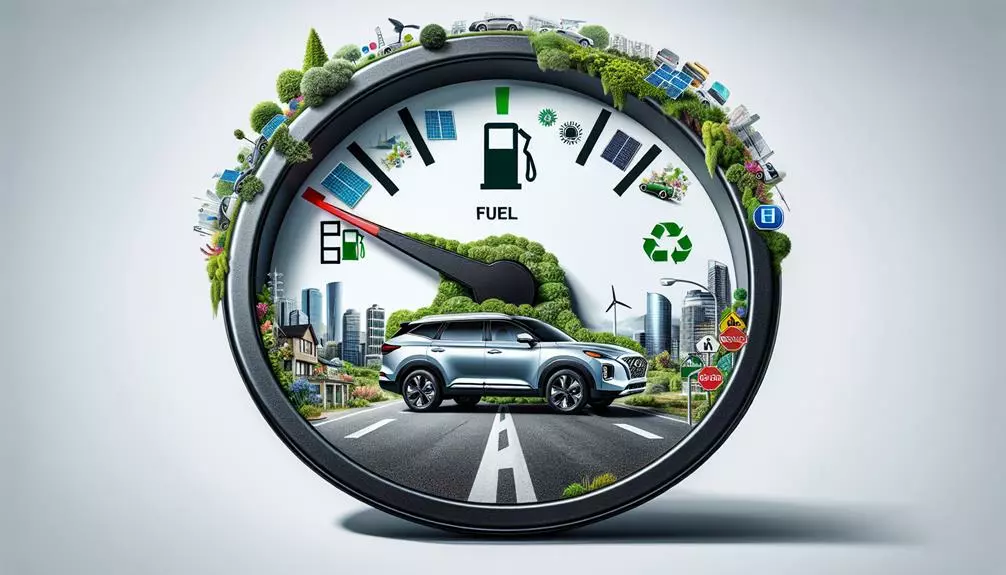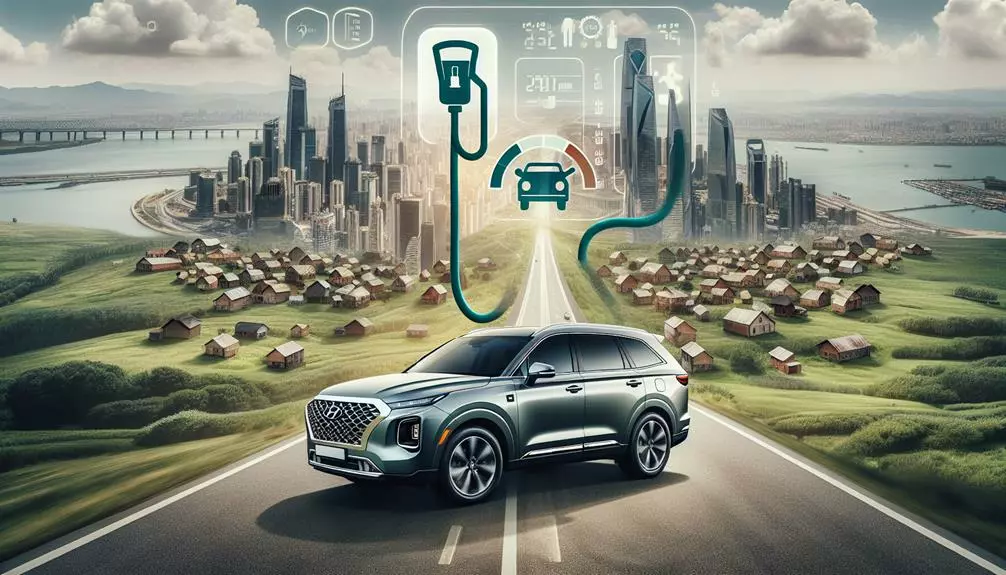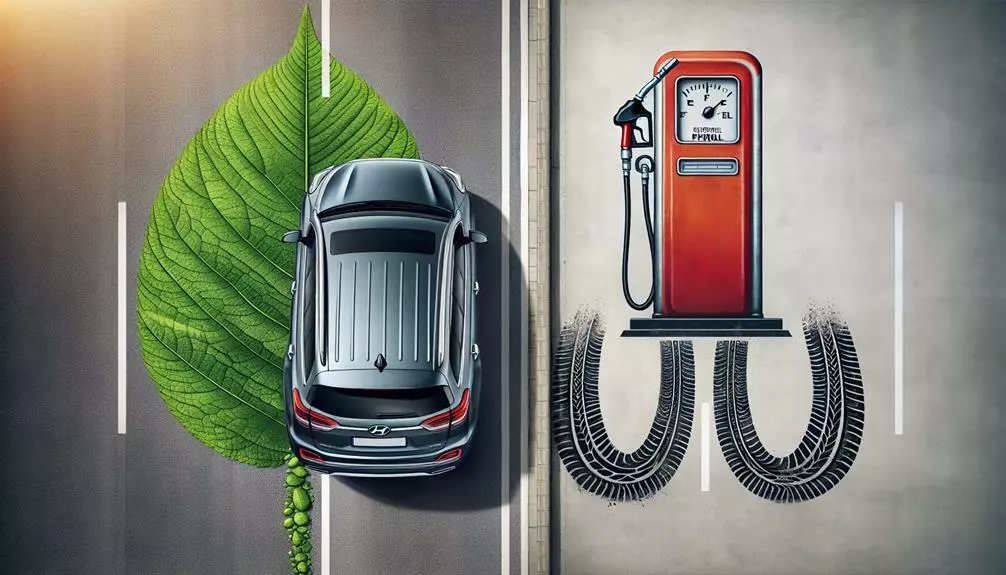The Hyundai Palisade offers respectable fuel economy for its class, with average estimates ranging from 19 to 26 miles per gallon (MPG) depending on the driving conditions and model configuration (FWD or AWD). This efficiency is quite competitive when considering its size and the standard V6 engine, offering a balance between performance and fuel consumption.
Your driving habits, such as acceleration and city versus highway driving, can significantly affect these numbers, making it crucial to consider your typical use case when evaluating the Palisade's fuel economy.
Understanding Fuel Economy

To understand the Hyundai Palisade's efficiency, it's important to know about fuel economy. Fuel economy measures how far a car can go on a gallon of fuel, usually in miles per gallon (MPG) in the U.S. This number is important because it affects how much you'll spend on gas and the overall cost of owning a car.
Knowing about fuel economy helps you make better choices when buying a car. A car with a high MPG rating means you won't need to fill up on gas as often and will save money on fuel over time. This is important because fuel prices can change a lot.
The Hyundai Palisade focuses on being fuel efficient, which means it's cheaper to run without losing performance. Choosing a fuel-efficient car like the Palisade saves you money and helps the environment by reducing emissions and saving natural resources.
When buying a car, it's smart to think about fuel economy along with the price. Understanding fuel economy can make your driving experience better and more eco-friendly.
Palisade's Engine Specifications
The Hyundai Palisade's engine is designed for both power and fuel efficiency. Here are the key specifications:
- Engine Type: V6
- Displacement: 3.8L
- Horsepower: 291 hp
- Torque: 262 lb-ft
- Transmission: 8-speed automatic
The Palisade's V6 engine provides strong performance with 291 horsepower and 262 lb-ft of torque, making it suitable for various driving conditions. The 3.8L engine balances power with fuel economy. The 8-speed automatic transmission helps with efficient driving, ensuring the engine runs effectively under different conditions.
Hyundai aims to blend driving enjoyment with practicality in the Palisade, focusing on performance and fuel efficiency.
Real-World Efficiency Tests

In real-world efficiency tests, we looked at the Hyundai Palisade's fuel use in different driving situations. Here's what we found:
- In city driving, the Palisade's fuel use can change a lot depending on how you drive and the traffic. But, it usually matches the EPA's estimates, which is good for city drivers.
- On the highway, the Palisade does a bit better than expected if you keep a steady speed. This is because of its design and how the engine works.
- For driving that mixes city and highway, the Palisade has good efficiency. This shows it works well in different kinds of driving.
- With more people or stuff in the car, the Palisade uses more fuel, but not as much as you might think. This means it manages its power well, even when heavy.
Our tests show that the Hyundai Palisade can meet or beat its fuel efficiency ratings in real-life driving. This is good news for buyers who want a car that's efficient, comfortable, and has lots of space.
Comparison With Competitors
The Hyundai Palisade's fuel efficiency is compared with competitors like the Honda Pilot, Toyota Highlander, and Ford Explorer. The Palisade performs well in its class, offering good power and efficiency with its V6 engine. It's not the top in fuel economy but not the worst either.
The Honda Pilot has similar fuel efficiency to the Palisade but may not be as enjoyable to drive. The Toyota Highlander, particularly the hybrid version, has better fuel economy than most rivals, but it costs more upfront. You need to decide if the extra cost is worth the fuel savings.
The Ford Explorer, especially with its EcoBoost engines, can sometimes be more fuel-efficient than the Palisade. However, considering the overall driving experience and ownership costs, the Palisade is often a better overall choice.
Impact of Driving Habits

Your driving habits can affect how much fuel your Hyundai Palisade uses. The way you drive can make the vehicle use more or less fuel. Here are some habits that change your Palisade's fuel efficiency:
- Aggressive Acceleration: Quickly speeding up uses more fuel. It's better to accelerate slowly to keep the engine running efficiently.
- Excessive Idling: If your Palisade is on but not moving for a long time, it wastes fuel and wears out the engine. Turn off the engine if you're stopped for more than a minute or two.
- Speeding: Going too fast makes the car use more energy to overcome air resistance, which uses more fuel. Driving at or just below the speed limit can save fuel.
- Heavy Loading: Carrying too much weight or using roof racks makes the car use more fuel. Take out things you don't need from your car.
Conclusion
To sum it up, the Hyundai Palisade's gas mileage is good when you think about the kind of engine it has and how it does on the road. If you compare it to other similar cars, it does just as well and is good at saving gas for a big SUV.
How you drive can also affect how much gas you use. So, if you want a big car that's both powerful and doesn't use too much gas, the Palisade could be a good choice. If you drive carefully, you'll probably notice that it uses less gas.